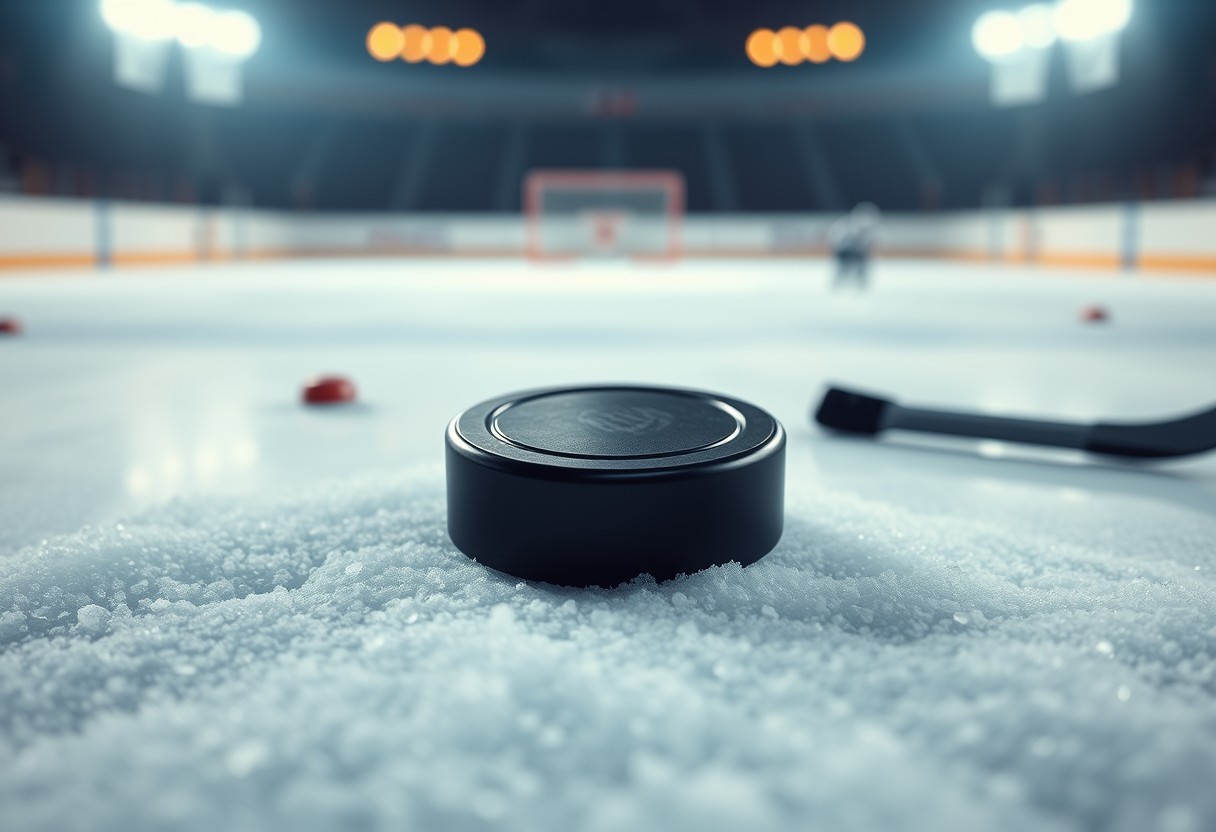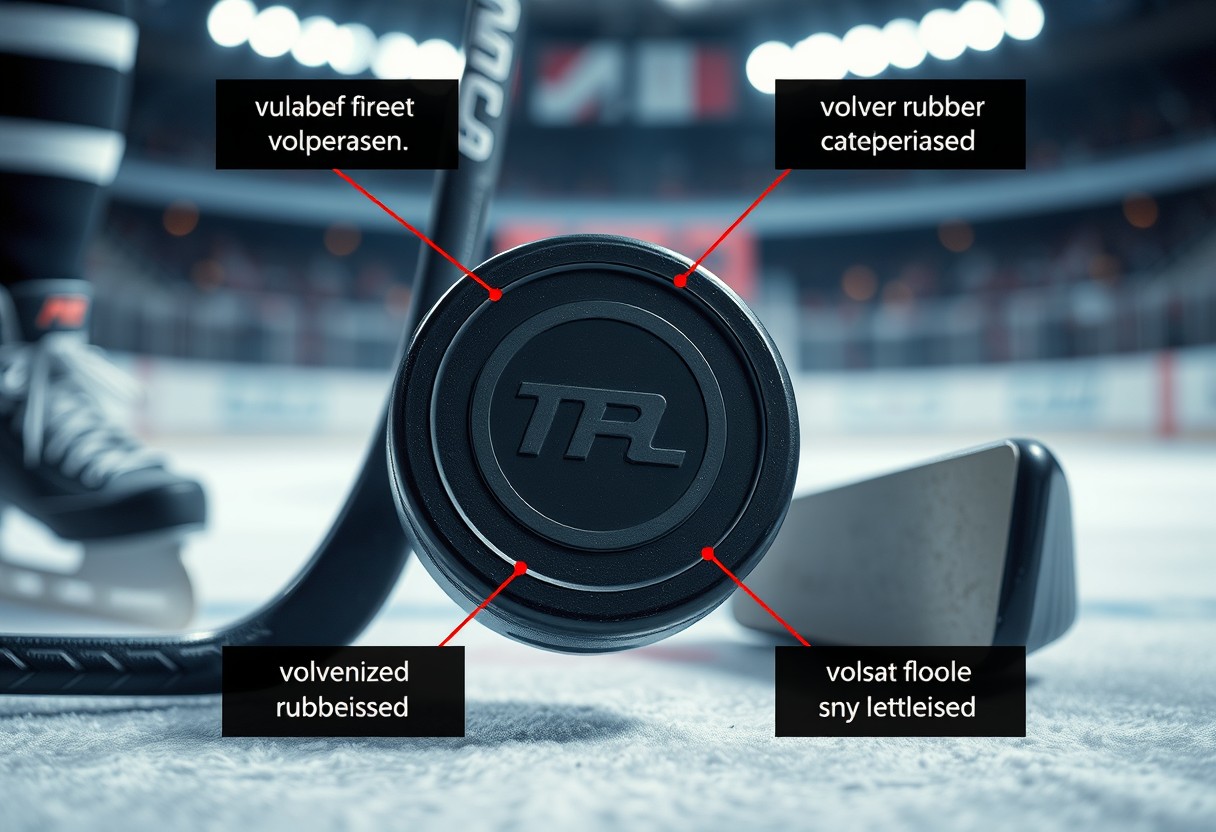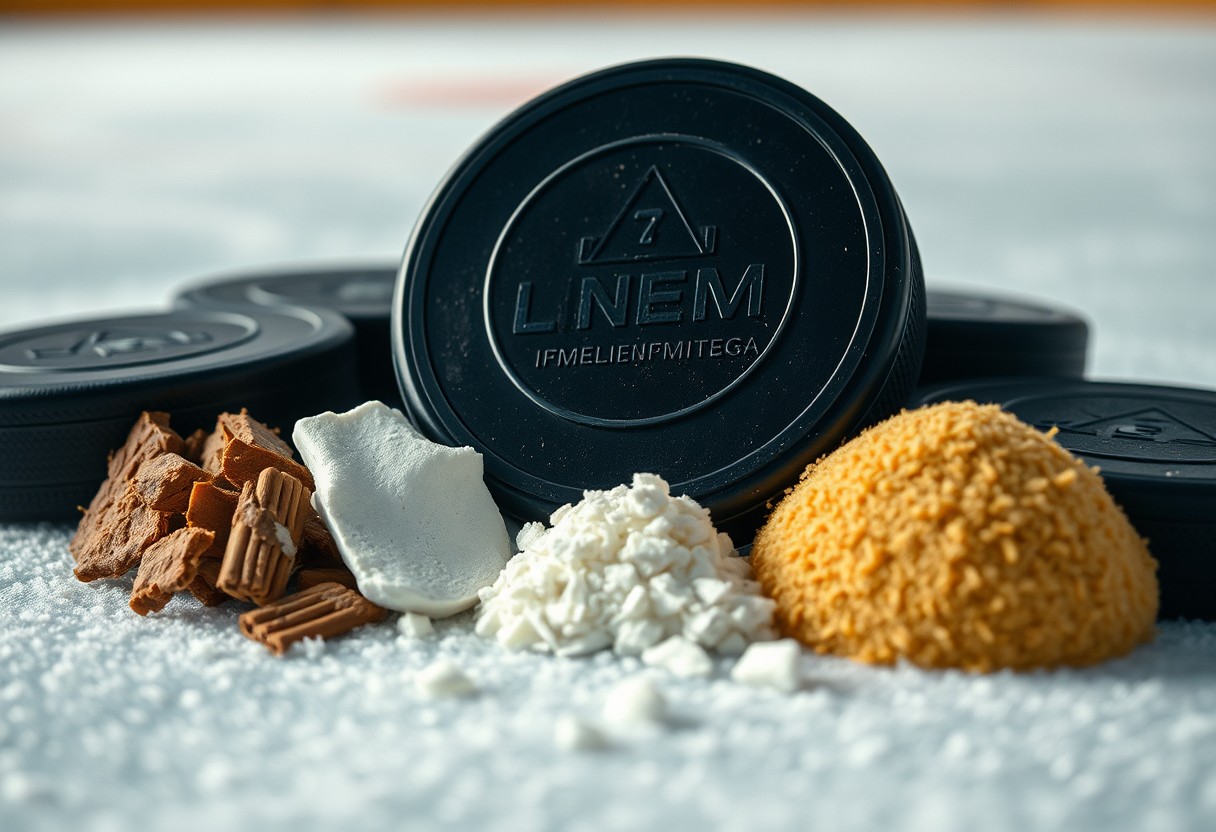With its distinctive black rubber structure, a hockey puck is more than just a simple disc; it’s the key element that drives one of the fastest and most exciting games on ice. You might not realize it, but the design, weight, and even temperature of a puck can significantly impact the game. In this post, you’ll learn about the puck’s history, specifications, and its vital role in the sport of hockey, giving you a deeper appreciation for this necessary piece of equipment.

Key Takeaways:
- Definition: A hockey puck is a flat, round object used in the sport of ice hockey that players hit with their sticks.
- Material: Most pucks are made of rubber, which provides the necessary durability and bounce on the ice surface.
- Regulations: Official NHL pucks weigh between 6 ounces (170 grams) and are about 1 inch (2.54 cm) thick, ensuring consistency in gameplay.
The History of the Hockey Puck
Your understanding of the hockey puck wouldn’t be complete without exploring its fascinating history. Knowing how this imperative piece of equipment has evolved over time can deepen your appreciation for the game itself.
Early Forms of Pucks
One of the earliest forms of pucks was simply a flat piece of wood or a ball made from various materials. In the late 19th century, players used whatever they could find, including blocks of wood or even frozen cow dung, to create their makeshift pucks. These rudimentary objects served as substitutes in informal games played on frozen ponds and rinks.
Evolution of Modern Pucks
Puck design began to change in the early 20th century as the sport gained popularity. Manufacturers started producing more consistent and durable versions, steering away from the improvised items of earlier days.
It was in the early 1960s that the standardized hockey puck, made of rubber and measuring 3 inches in diameter, emerged. This change improved gameplay and allowed for more precise puck handling. Innovations in material and design have continued, with modern pucks often incorporating technology, such as tracking systems for enhanced video analysis. Today, your experience of watching or playing hockey is profoundly influenced by these advancements, demonstrating how far the sport has come while still retaining its fundamental essence.

Materials Used in Hockey Pucks
You may be surprised to learn that a hockey puck is not just a simple, solid piece of rubber. The materials used in its construction play a vital role in its performance on the ice, ensuring the puck meets the demands of the game while providing players with a consistent experience during play.
Rubber Composition
To create a standard hockey puck, a specific rubber composition is utilized, typically made from vulcanized rubber. This durable material is designed to withstand extreme cold and repetitive impacts during the fast-paced game of hockey, allowing for controlled bouncing and sliding on the ice surface.
Alternative Materials
Used in select leagues and training settings, alternative materials for hockey pucks include plastic and composite materials. These variations offer unique benefits, such as lighter weight and enhanced durability, which can be particularly useful for younger players or during practice sessions.
This evolution in materials highlights the adaptability and innovation in the sport of hockey. Plastic pucks are often used in off-ice training to simulate game-like conditions without the risk of damaging surfaces. Composite pucks, on the other hand, can often feature variations in weight and design, allowing coaches to customize the experience to better suit the needs of their players. Understanding these alternatives can help you choose the right puck for your specific needs, whether on the ice or off.
Technical Specifications
Unlike other sports equipment, a hockey puck has precise technical specifications that ensure uniformity across the game. Understanding these standards is vital for players, coaches, and enthusiasts alike.
Size and Weight Standards
Specifications dictate that a standard hockey puck must have a diameter of 3 inches and a thickness of 1 inch. It should weigh between 6 ounces (170 grams) and 6.5 ounces (180 grams). Adhering to these size and weight standards is crucial for maintaining fairness and consistency during play.
Performance Characteristics
With its unique design and structure, a hockey puck exhibits specific performance characteristics tailored for the ice. The puck’s ability to slide smoothly and its stability during play depend on its material and shape.
Size and weight directly affect how a puck interacts with different playing surfaces, impacting its speed and control. In your gameplay, you’ll notice how a well-manufactured puck glides effortlessly across the ice, allowing for precise passes and powerful shots. Understanding these performance characteristics can enhance your overall experience and effectiveness on the rink.
The Role of the Hockey Puck in the Game
Many aspects of hockey revolve around the hockey puck, which acts as the central object of play. The puck’s movement and interactions define the dynamics of the game, determining how teams strategize and execute plays, making it crucial for the excitement and unpredictability that you experience on the ice.
Gameplay Dynamics
Any successful hockey game hinges on the puck’s role in facilitating gameplay. It serves as the target for both offense and defense, enabling players to achieve scoring opportunities while also prompting defensive maneuvers. The puck’s trajectory and speed create a unique rhythm that players must adapt to constantly.
Puck Handling Techniques
Role in hockey includes mastering various puck handling techniques that allow you to outmaneuver opponents and maintain control. Skills such as passing, shooting, and deking are all vital components that can enhance your effectiveness on the ice.
This mastery is key to elevating your game, as it allows you to navigate tight spaces and create scoring opportunities. Developing skills like forehand and backhand dribbling, and effective wrist shots, can significantly impact your performance. As you improve your handling techniques, you’ll find that your confidence and ability to contribute to teamwork also increase, ultimately raising your overall gameplay experience.
Conclusion
Following this, you should now have a clearer understanding of what a hockey puck is and its integral role in the game of hockey. From its unique design to its material properties, the puck is crucial not just for gameplay but also for player strategy and safety. As you engage with the sport, whether as a player or a fan, appreciating the functionality and evolution of the hockey puck enhances your overall experience and knowledge of the game.




